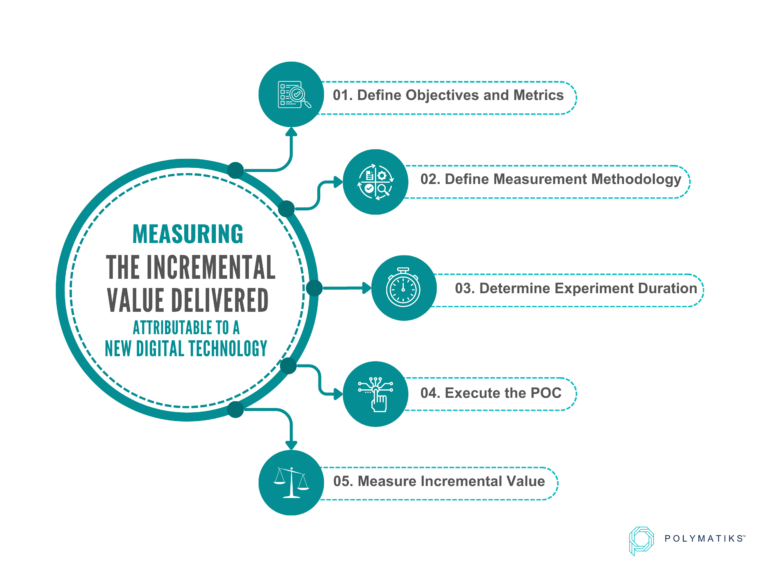In the ever-evolving, complex, and ultra-competitive landscape of retail, one thing has become abundantly clear: digital capabilities are no longer a luxury; they are a necessity. Retailers across the globe are undergoing a profound transformation as they recognize the critical role that technology plays in meeting the demands of today’s consumers.
While retailers look to harness the power of digital technologies to stay competitive, relevant, and customer-centric, it’s imperative that they understand how to measure the incremental value delivered from implementing these technologies. In this blog, we’ll describe the steps that we, at Polymatiks, take with our Enterprise clients to quantify the incremental value that is attributable to our solutions during a proof-of-concept (POC).

Step 1. Define clear objectives and metrics
Before implementing a POC to test a new digital technology, it’s vital to establish clear objectives and the corresponding metrics that will be measured to determine the POC’s success. Moreover, these objectives and metrics must align with your organization’s overall business goals and key performance indicators (KPIs). For example, the POC’s objectives could be to increase gross profits, sales, or a combination of the two.
Step 2. Define a methodology to measure the incremental value delivered
Once the objectives and metrics of the POC have been defined, it is imperative that you establish and align on a methodology to measure the incremental value delivered of implementing the digital technology. At Polymatiks, we like to use the Pre + Post, Test + Control randomized experimental design. This design is the most commonly used design in randomized controlled trials, and it has 3 major characteristics:
-
- Subjects or data points are randomly assigned to either the Test or Control groups. The Control group is a baseline against which you’ll measure the effects of the digital technology. In particular, the Control group consists of subjects (e.g., customers) or data points that are not exposed to the changes introduced by the digital technology. The Test group, on the other hand, experiences the changes introduced by the digital technology.
-
- Both groups are exposed to the same conditions; however, the Test group experiences the changes introduced by the digital technology.
-
- The outcome is measured simultaneously for both groups at two points in time – prior to the experiment (i.e., Pre Test) and after it (i.e., Post Test).
If we take the Polymatiks Personalized Offers solution as an example, the Test group would be comprised of customers who receive personalized offers, whereas customers in the Control group do not.
Step 3. Determine the duration of the experiment
Having defined your objectives and the methodology to measure the success of the experiment, it is imperative to determine its duration. While determining the duration of an experiment might appear trivial, careful planning and consideration is critical, as it will ensure that the experiment has generated enough representative data to measure success. Factors to take into consideration include your customers’ trip frequency, purchase frequency, and seasonality. To that end, if the purchase frequency is 2x per year, a duration of 12 months might be required for the POC.

Step 4. Execute the POC
This is when you execute the POC for the duration determined in Step 3). It’s crucial to ensure the experiment is executed precisely as planned, and avoid any confounding effects.
Step 5. Measure the incremental value delivered
Once the POC has been executed, collect the necessary data for both Test and Control groups. Then, based on the methodology defined in Step 2, the incremental value delivered is determined by computing the difference between the performance of the Control group and that of the Test group for each metric defined in Step 1.
Measuring the incremental value delivered using the Pre + Post, Test + Control design methodology is a systematic and data-driven approach that allows retailers to accurately assess the impact of enabling a particular digital technology. By following the outlined steps, retailers can make smarter choices and continually refine their strategies for greater success.
Want to learn more about Polymatiks? Click here to book your demo or email us at info@polymatiks.ai.




